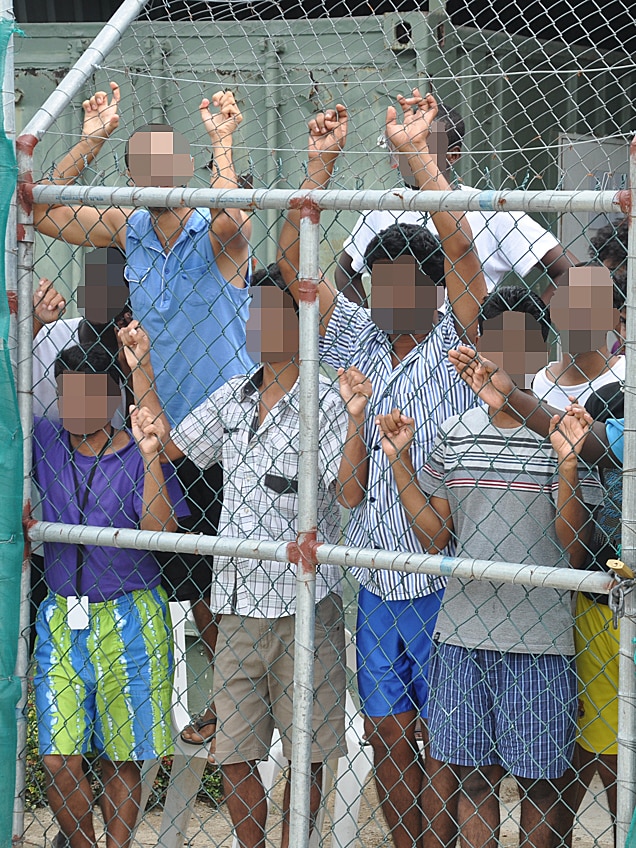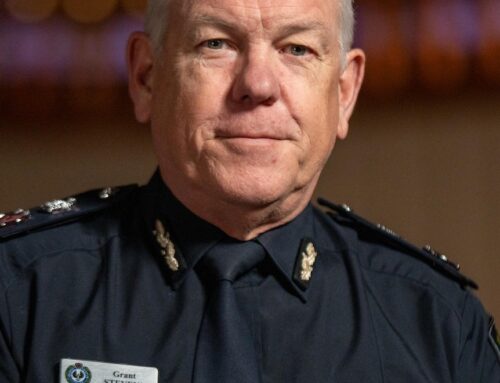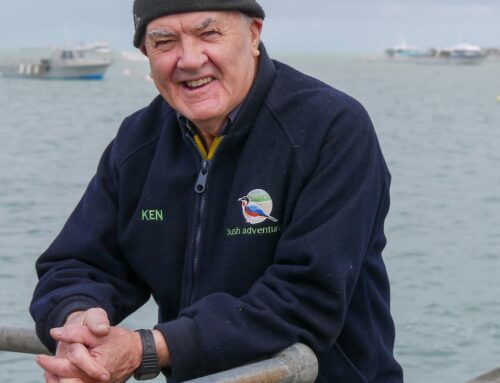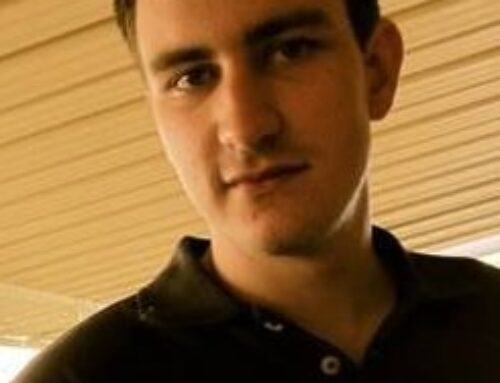Detainees in Australian immigration centres are self-harming or threatening self-harm at an alarming rate, with an average of 1.5 incidents recorded by Home Affairs every day over the last five years among a population of just over 1,000 people.
Data compiled by the Department of Home Affairs and obtained by the ABC shows the prevalence of severe mental health issues that still affect people held in Australia’s immigration detention network.
Between July 1, 2019, and 31 March, 2024 — a span of 1,735 days — the department recorded a total of 2,670 incidents, or 1.54 incidents every day.
There were 1,965 threats of detainee self-harm incidents reported, and 714 actual self-harm incidents.
The documents also showed that the average time spent in detention is 545 days.
Advocates have been urging the government to move away from detention in facilities and begin to roll out community-based bridging visas across the board.
Fear remains after leaving facilities
“Sarah”, who did not want the ABC to reveal her name, said after almost four years in detention she carries scars from her imprisonment which might never heal.
She now lives in community detention.
In December 2014, Milad Jafari was distraught when wife Mojgan Shamsalipoor was re-detained after her refugee claim was rejected. (ABC News)
“After leaving detention I still have some side effects. During the time I was there I have seen people being dragged out of the bed [to be] taken overseas, back to their country, or different detentions or different locations,” she said.
“That fear is still in me.”
Sarah arrived as an 11-year-old child by boat with her father.
A few years after they arrived their visa lapsed and she and her father were thrown in detention where she spent nearly four years.
The helplessness grew and she attempted self-harm.
“It was my situation. And after three years and seven months I had enough. I reached a point where I harmed myself,” she said.
“It’s something common you see there. It’s being tired and obviously having enough of being detained for years and years. So I’ve seen a fair bit of self-harm.”
Compounding trauma
Psychologist Kyli Hedrick from the University of Melbourne’s School of Population and Global Health said the rate of mental health trauma in detainees is incredibly high.
“You have very vulnerable individuals there who are experiencing high levels of distress, perhaps related to their pre-migration trauma,” Dr Hedrick said.
“But you also have conditions in detention that are suboptimal and people are held there for very long periods with great uncertainty.”
Dr Hedrick said health outcomes for in-community detention are far better and should be considered by government as the preferred option.
“We know from our research that when you are in community detention those rates are considerably lower than when you’re in those immigration detention settings,” she said.
Immigration detention is a key pillar in the government’s border management and immigration compliance system.
People kept in immigration detention system include non-citizens without a valid visa, people suspected of immigration violations or unlawful entry, and people who are being deported or removed from Australia.
A rally outside Brisbane’s Lady Cilento Hospital to support doctors refusing to let a 12-month-old girl return to detention on Nauru in 2016. (AAP: Nathan Paull)
In May this year the High Court ruled that indefinite detention is lawful where the person voluntarily refuses to cooperate with their deportation, but unlawful where that person is incapable of cooperating, like medical incapacity.
It followed a High Court ruling in November that resulted in the release of about 150 people in immigration detention, which set off a fierce political debate.
High cost of detention in facilities
The data on threatened self-harm and cases of self-harm includes incidents from the Adelaide, Brisbane, Melbourne, Perth, Phosphate Hill, Villawood, Yongah Hill, and Christmas Island detention centres, and the Northern Alternative Place of Detention in the NT.
To house a detainee in detention it cost the Australian government $428,542 per person, per year, over the 2020-21 financial year.
The average operating cost per annum of holding a person in community detention was $54,798 over the same period.
The ABC approached the Minister for Immigration Tony Burke for comment, but was referred to Australian Border Force.
In a statement, a spokesperson for Australian Border Force admitted that a “prison-like culture” had emerged within Australia’s detention system because of an “increase in high-risk individuals”, as well as “increasing levels of physical violence, concealment and infiltration of illicit substances [and] contraband, and organised criminal activity.”
“The security profile of the cohort continues to worsen as individuals are released from prison, or have their visa cancelled on character and security grounds,” the spokesperson said.
“Immigration detention is a key pillar in the border management and immigration compliance continuum, maintaining the integrity of the migration program and providing a deterrent as part of Australia’s strong border control measures.”
Protesters show support for the asylum seekers detained at a hotel in Brisbane in August, 2020. (AAP: Darren England)
The Border Force spokesperson said the number of self-harm incidents had declined in the past five years, and detainees had access to healthcare commensurate to the public health system.
Australia a ‘brutal outlier’
Greens immigration spokesman David Shoebridge has called for the abolition of the onshore detention system altogether.
He said Australia’s detention regime is still far more punitive than equivalent democracies overseas, even those with hardline immigration policies.
“To give some global context, in other countries which have quite tough immigration regimes like Canada, the UK, the US, Germany or France, the average time in detention in those countries is between 14 and 55 days,” he said.
“Australia is a brutal, brutal outlier.”
Sarah wants Australians to understand that there are others, like her, who did not choose to come here.
She said she was supposed to arrive with her mother, a citizen of Australia, but her father took her via boat.
“Years went by and eventually we went back to detention for an expired visa, and that’s when I applied for my own visa,” she said.
“I just want to say it’s pretty hard for people who didn’t have the choice to come. For my father’s mistake I paid six years of my life.
“Sometimes it’s very hard … it might not look the way it looks from the outside.”




